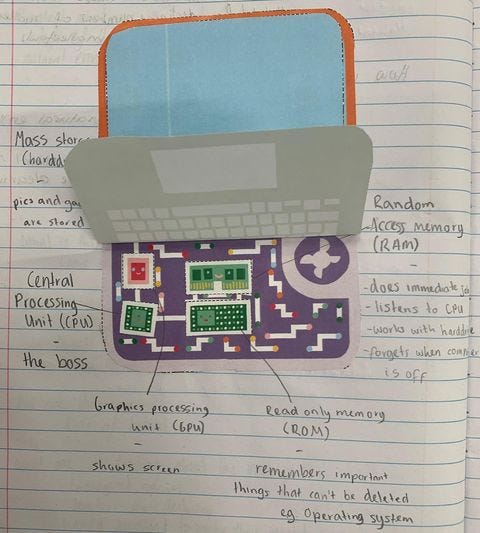My name is Linda. I write a bi-weekly newsletter about computer science, childhood and culture - and there are 9447 of you listening. If you enjoy this issue, please share it with anyone you think may find it useful.
Marginalia, as in marginal notes or embellishments in a book, has long been an obsession of mine. The Hello Ruby series got started as scribbles in the margins of my Learning Rails book back in 2010. Whenever I didn’t understand a concept (MVC?Object oriented design?), I would try to make a tiny drawing of it. This obsessive habit became my career.
Ever since I’ve been a reader with a pen. And I am in no way alone.
Oliver Sacks was a voracious scribbler of his 500+ books. Browsing through these pictures it occasionally feels his playful soul is present in the space between the text and its commentary. One recurring app wish I have (😞 Readmill👋 Readwise) is a social way to read and share marginalia. I think the only NFT I’d be interested in purchasing is one that unlocks the layers of secrets someone else’s notes contain.
Sam Anderson made smart and detailed notes while reading that grew into essays and critiques, but also a year long project highlighting this visible thinking.
Pierre de Fermat wrote his famous last theorem in the margins. I’ve linked the project inspired by this tendency for scientists and researchers, Fermat’s library, before but it bears repeating. Start with the recent I, Pencil article.
It’s not only the literary and scientific text that in my opinion benefits from a subjective commentary. Programmers regularly annotate their code to make it easier for the next human to read it - the computer doesn’t really care and odds are someone else will work on your code in the future. Sometimes it happens with line comments, separated from the actual code with special characters (like /* or ##). Sometimes it’s done by the software that handles the versioning (like git diff or commit history).
Recently I’ve been trying to find primary sources on early Finnish punchcard operators. Some of these punchcards from 1950s and 1960s are digitalised, but they lack.. context? Thinking? It makes me wonder if the most lasting legacy of the Svalbard Github repositories won’t be the code, but the annotations that are stored.
Linked List
In computer science, a linked list is a linear collection of data elements whose order is not given by their physical placement in memory. But here it is a selection of things I’ve been reading lately.
Women of Computing. Lego Ideas project you can help support become real - a little over halfway there!
I’m reading the new book on Fred Rogers by Gregg Behr & Ryan Rydzewski and this visualisation on Mr Rogers cardigan colors still makes me smile.
Signed Char Lotte is a code palimpsest (needed to google that!). In essence, it’s a love/breakup story written in C and it compiles. What’s not to love.
Classroom
I’m hoping to surface and share stories from all of you and I’d love to see your creations! Instagram has been recently quite active - sharing here a few of my favorite inventions. I’m also trying to remember to post more on the Hello Ruby instagram account and share these there.











